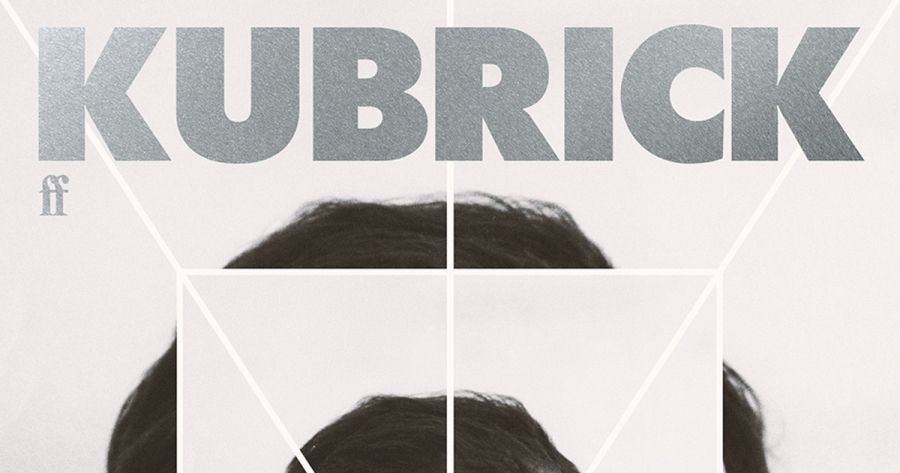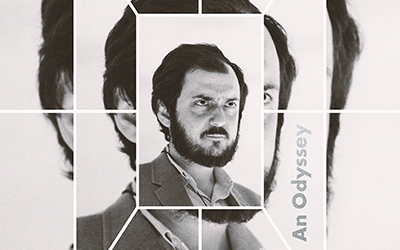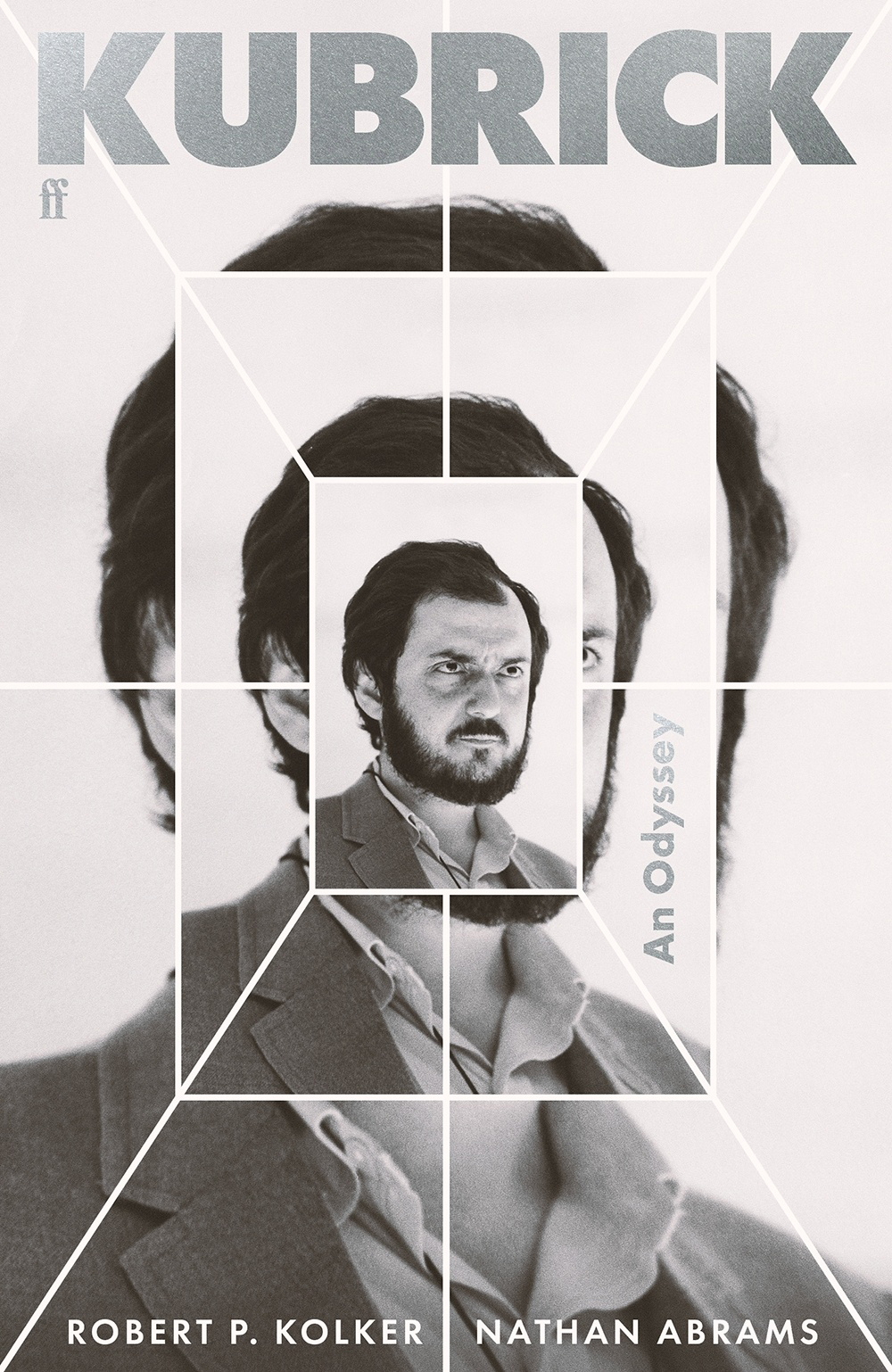
- Free Article: No
- Contents Category: Film Studies
- Review Article: Yes
- Article Title: Boy Wonder
- Article Subtitle: The protean and hubristic Stanley Kubrick
- Online Only: No
- Custom Highlight Text:
There might be a million stories in the naked city, but the early childhood of Stanley Kubrick was one of the more typical: born in 1928, in the Bronx, to upwardly mobile, artistically sophisticated Jewish parents, one generation out of the Pale. ‘I’m not Jewish but my parents were,’ he liked to joke.
- Featured Image (400px * 250px):

- Alt Tag (Featured Image): Peter Goldsworthy reviews ‘Kubrick: An odyssey’ by Robert P. Kolker and Nathan Abrams
- Book 1 Title: Kubrick
- Book 1 Subtitle: An odyssey
- Book 1 Biblio: Faber, $65 hb, 655 pp
- Book 1 Cover Small (400 x 600):

- Book 1 Cover (800 x 1200):

- Book 1 Readings Link: https://www.readings.com.au/product/9780571370368/kubrick--robert-p-kolker--2024--9780571370368#rac:jokjjzr6ly9m
As for school, when he finally dropped out, aged seventeen, he lucked in: landing a million-to-one job as the youngest-ever staff photographer at the upmarket Look magazine, which had a circulation in the millions. This was the first of various big ‘breaks’ that came his way.
He was a superb photographer. It would be good to see more of his work in this biography, but they can be tasted online. He was handed plum assignments; one for an article entitled ‘Boy Wonder Grows Up’ about Leonard Bernstein, ten years his senior.
The Boy Wonder behind the lens chucked in the security of Look in his early twenties to make documentaries, which, however amateurish, always looked beautiful, unsurprisingly. Good pictures, in the pre-motion sense of the word.
After a disastrous first feature – Fear and Desire (1952) is so comically bad it is worth checking out on Prime TV, where such things go to die – Kubrick lived for a couple of hard-scrabble years partly on the earnings from chess hustling, working up to twelve-hour day shifts in Washington Square, at a quarter a game. ‘I did make about two or three dollars a day ... it really goes a long way if you’re not buying anything except food.’
This 600-page biography, co-written by two film scholars – Robert P. Kolker and Nathan Abrams – is a seamless and often mesmerising read. It is packed with riches on every level from the personal to the political to the gossipy to the artistic, but Stanley’s early struggles, and his sheer will to overcome them, no matter who got in the way, are especially riveting. He never stopped hustling for film money between chess games, borrowing and begging from friends and relatives, shooting low- but always over-budget films on what might be called the Micawber principle: the cheque is in the mail. He was driven, obsessively, and possessed of an enormous ego – which at least insulated him against despair. Of course, there were costs: friendships, marriages. ‘Stanley Hubris’ took credit where little was due, and demanded total control of every project he was involved in, even if it wasn’t his.
So far, so typical. The entire American movie business seems built on the loose bricks of hustler stories, or Darwinian fights for survival; the survivors being those who get the proverbial lucky break. Young Stanley had courageously abandoned his first – a plush post at Look magazine – so perhaps he deserved the next: a young like-minded millionaire investor-producer, Joseph Harris.
His previous producer having died of a heart attack on a transatlantic flight (a useful break, if not lucky for all involved), Harris-Kubrick Pictures was born. And they were always pictures as much as movies. Always seductive to look at, still by still.
From here on, his story gets less typical – and, very soon, unique. Young Stanley elbows his way to the front of the hustling pack. He makes his first very good movie – Paths of Glory (1957) – with Kirk Douglas as Colonel Dax, a French officer in the trenches during World War I. The great (if tacked on at the last minute) closing scene in a tavern, as a captured German woman sings to the catcalling French troops, until their faces fill the screen with deeply etched character and changing emotions, predates the astonishing facial close-ups of Sergio Leone by a decade. In fact, the French troops were Munich cops, and the film was shot near Dachau concentration camp, in a bombed-out schloss, with the odd ex-Nazi in the crew.
The beautiful singer became Kubrick’s third and last wife, and the love of his life: Christiane Harlan. Meeting her family, prominent among whom was Veit Harlan, the notorious director of one of the worst anti-Semitic films of the Goebbels era, was a difficult experience for Kubrick. ‘I felt like Woody Allen looking like ten Jews.’
After a couple more years of scrounging and hustling, at poker as well as chess, the Kirk Douglas connection provided his biggest break: Kubrick became the youngest director ever entrusted with a major epic – Spartacus (1960) – and a shimmering A-list cast. I just wish he’d shot it in black and white.
Given that this thirty-ish upstart from the Bronx was suddenly directing Laurence Olivier, Jean Simmons, Charles Boyer, and Peter Ustinov, there were more than the usual fallings-out with the cast and crew. The vastly experienced cinematographer Russell Metty took exception to Kubrick’s resetting all his camera angles. ‘Get that little Jew-boy from the Bronx off the crane.’ It’s a wonder Kubrick didn’t claim Metty’s Oscar for Best Cinematography for himself, having effectively sidelined Metty for the duration of the shoot. Tony Curtis, another ‘Jew-boy’ from the Bronx, famously said, ‘Who do you have to fuck to get off this picture?’ but nevertheless forged a lifelong friendship with Kubrick.
The battle scenes were shot in Spain, using (another bizarre historical irony, this being a story about a revolt of slaves against tyranny) the fascist troops of General Franco.
Next, Kubrick tried to acquire the rights to Boris Pasternak’s novel Dr Zhivago, planning to cast Kirk Douglas in the title role. Having Spartacus play the gentle doctor-poet might not have been one of his best ideas. A good fit for Komarovsky perhaps, but Rod Steiger made that role his unforgettable own.
Kubrick did manage to nab the other really famous Russian novelist of the time, paying Vladimir Nabokov an advance that was greater than the sum total of the novelist’s lifetime earnings to that point. Lolita, released in 1962, is Kubrick’s first truly great movie, the excellent Paths of Glory notwithstanding. His next, indisputably, was Dr Strangelove, in 1964.
Which is when I got my own first lucky break into the movies – albeit limited to the stalls. This is not entirely irrelevant, or self-indulgent; I should declare, or explain, my Kubrick bias. We never had a television, and I didn’t get to the pictures much as a child. But my teen years were the 1960s, and by sheer luck the three movies I fell hardest for during that formative decade were all Kubrick’s.
This might never have happened. It was a minor miracle that I got to see Dr Strangelove in 1966, at the tender age of fourteen. A few enlightened teachers at my country high school founded a weekly ‘Lyceum Club’ for senior students interested in the arts and politics. I was too young, but got in on the skirt-tails of my older girlfriend, most memorably on the sole movie night of the year. I was stunned. Thrilled. I had seen nothing like it before, although a subscription to Mad magazine at the age of thirteen perhaps primed my receptive brain.
Lolita had been shot several years before, but had zero chance of a high-school screening. I saw it when I was seventeen, in my first year as a medical student. I had seen nothing like this – except perhaps for the many faces of Peter Sellers. It still seems as perfect as a movie can be, not least in its casting of the four main characters: a comic masterpiece, capable of swallowing laughter into pathos, then coughing the laughter back up again in a blink.
One fact I didn’t know: Errol Flynn requested a screen test for the role of Humbert. He also suggested his teenage girlfriend of the time as Lolita. Her mother wrote Kubrick a letter recommending her for the part: ‘She’s living it now.’
Hundreds of mothers pushed their daughters to audition, a different, if still typical kind of hustle. Anything to get into the movies. That the greatness of the film is different from the greatness of the book is partly down to Sellers, playing an expanded role of Clare Quilty. For once, the control freak Kubrick had enough sense to give the actor his improvisational head. James Mason as Humbert plays an exquisitely mannered straight-man, until he memorably doesn’t.
2001: A Space Odyssey (1968) arrived in Adelaide later that same year. I saw it three times in a fortnight, even though it was in colour. In the end, because it was in colour. The black-and-white beauty of the earlier masterpieces came from Kubrick’s days as a photographer, and from countless Bronx Arthouse nights watching De Sica and Eisenstein and especially his hero, the German Jewish director Max (born Oppenheimer) Ophüls – but 2001 is preposterously beautiful in technicolour.
 Gary Lockwood and Stanley Kubrick on the set of 2001: A Space Odyssey (Pictorial Press Ltd / Alamy)
Gary Lockwood and Stanley Kubrick on the set of 2001: A Space Odyssey (Pictorial Press Ltd / Alamy)
The biography spends a lot of time on this movie, which is fair enough – the preparations took years and an army of technicians. By now, Kubrick and clan had decamped, permanently, to the United Kingdom, a short drive from the Ealing studios. Scientific advisers visiting the vast sets from the United States liked to refer to it as ‘NASA West’. All of which helped fuel the rumour, after 1969, that it was Kubrick who had faked the moon landing.
Well, it had to be someone.
He was keen to make a film about Napoleon next, another epic biopic. As obsessive as ever, he read ‘hundreds of books’, scouted scores of locations, booked the entire standing army of Romania as extras. But studio tastes had downsized. He ended up adapting Anthony Burgess’s novel A Clockwork Orange instead. I liked it at the time, but it now seems dated, and rather silly. His Napoleon fallback epic was Barry Lyndon (1975), based on the Thackeray novel, to film which his giant armada had to invade Ireland, only to fall back to England, with Kubrick death-threatened by the IRA. Too many redcoats were marching around the emerald island from an era when it was completely under the British thumb.
I didn’t think much of Barry Lyndon at the time, but Abrams and Kolker make a good case for it, and I will watch it again, with humble hope in my heart. The Shining (1980) was a return to form, in, as usual, a completely different direction. The battle scenes of his Vietnam war movie, Full Metal Jacket (1987), were, astonishingly, shot in an abandoned London gasworks. Kubrick hated to travel.
I could write another ten thousand words on the stories behind these films and the others in this splendidly naked book. ‘Stories are a kind of miracle,’ Kubrick liked to say, and he was always searching for them. He thought of himself as a writer, and read potential ‘properties’ voraciously, from Brian Aldiss to Philip ‘Wroth’. All his movies are based on novels, or stories, however changed, rich, or strange, and his relationships with, and mistreatment of, his writers would make another, even longer, book. Likewise, his composers and music arrangers.
Which brings me to the movies he didn’t make. He met with John Lennon and Paul McCartney to discuss directing a musical version of Lord of the Rings, with a soundtrack by the Beatles (their idea!), but declined the offer and stole the music director of Apple music instead. Holy Hobbit, Boy Wonder – a close shave! Years-long preparation for a projected Holocaust movie had the rug tugged from under it by his close friend Steven Spielberg’s Schindler’s List. For years he was obsessed with an AI movie about a robot boy who comes to life – working title Pinocchio – until finally deciding that Spielberg was a better fit.
These various dead ends meant a lost decade before his last movie, Eyes Wide Shut, appeared in 1999. He had nursed the Arthur Schnitzler novella Traumnovelle, on which it is based, all his life. No surprise there; novels by both Schnitzler and his fellow Jewish Austrian Stefan Zweig had been lifted onto the screen superbly by Max Ophüls. Our tag-team biographers make a good case for this much-maligned movie too. No surprise there either. Their earlier collaboration was a book called Eyes Wide Shut: Stanley Kubrick and the making of his final film (2019).
I watched it again last night. Twenty-five years back, I felt that Nicole Kidman and her then-husband Tom Cruise lacked chemistry, a fatal flaw in a film about the varieties of sexual chemistry – or sexual physics, more accurately. But maybe that’s the point, as with the formal, unsexy orgy. Kubrick died suddenly before applying his final editing touches, so we’ll never know. Either way, I’ve changed my opinion. It’s a much more intriguing – and of course beautiful – movie than I remembered.
One formative opinion hasn’t changed though: he would never again quite equal the three masterpieces of the 1960s, Lolita, Strangelove, and 2001.


Comments powered by CComment